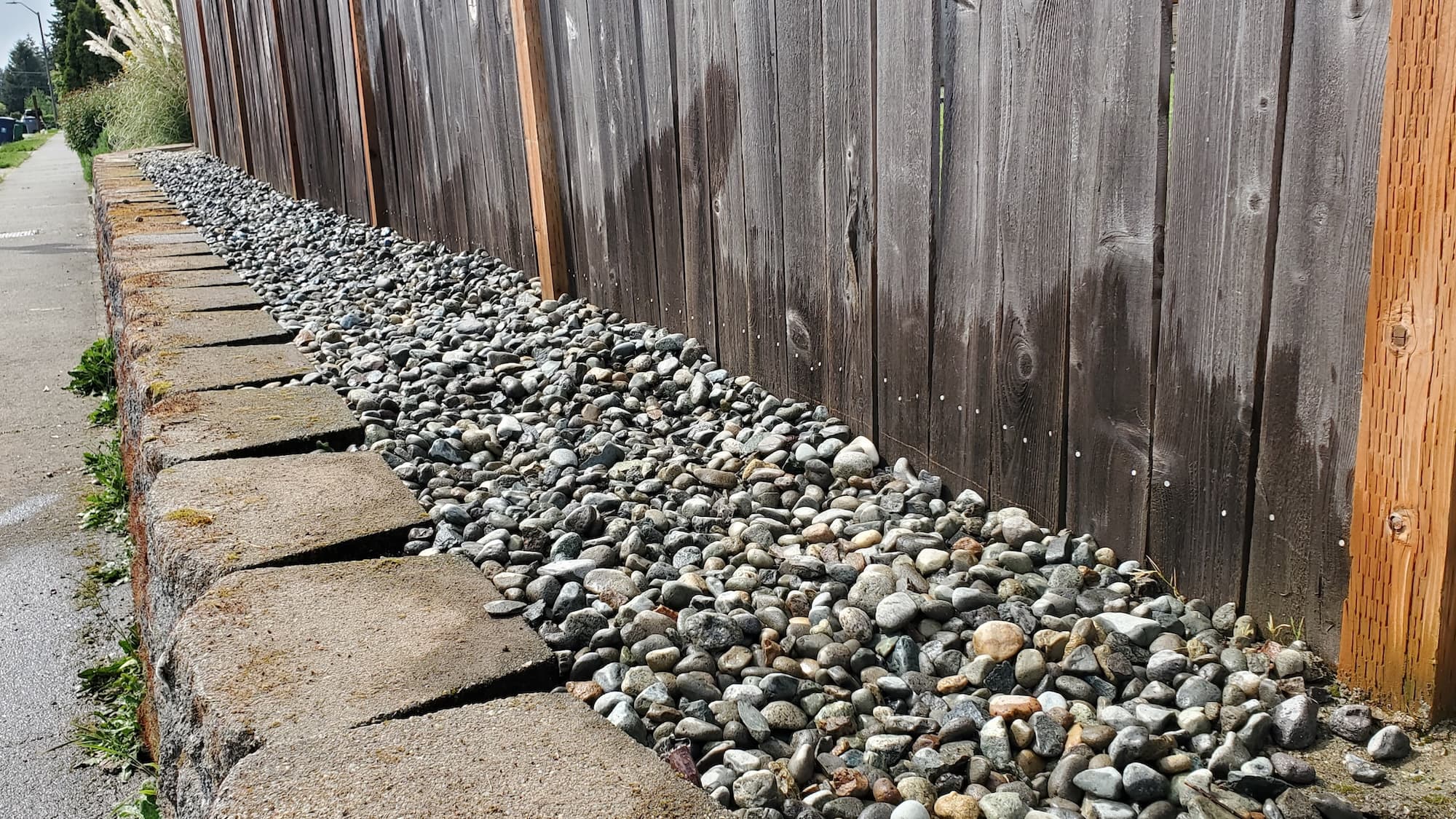West Seattle Gravel Path Repair & Refresh
Homeowner’s Issue
West Seattle gets wet more months of the year than not, and that constant rain plus foot traffic and steep blocks near Admiral and the hill above Alki leave gravel paths thin, rutted, and muddy. Many yards here sit on compacted fill or glacial deposit with localized clay pockets — both make drainage and settling a recurring problem. Shaded corridors under mature maples and Douglas firs collect moss; sun-exposed slopes on eastern-facing yards push gravel downhill during December storms. Properties around Lincoln Park and the higher Fauntleroy ridgelines also show erosion where runoff concentrates at steps and light wells.
Homeowners call about trip hazards, spreading rock into beds, and weeds that return even after a sweep. HOAs or neighbors in tight West Seattle streets expect tidy edges and low-maintenance finishes that won’t demand constant attention. Water-wise practices matter here: summer droughts mean we aim for permeable surfaces and minimal supplemental watering, while heavy winters demand paths that shed water instead of holding puddles. This project focuses on practical fixes you can see and live with — no short-term cosmetics, only sustainable solutions that respect city drainage and your curb appeal needs.
Our Quality Service
We diagnose failing path systems, then repair or rebuild with materials and methods suited to West Seattle soils and rain cycles. Typical steps: remove displaced gravel, regrade base, add compactible sub-base where needed, lay geotextile fabric if requested, then install 1–3” of screened gravel and finish with clean edging. We use compactors, rakes, and breathable geofabrics; small skid-steer work is possible on wider drives but most paths are hand-finished for a precise look.
Timeline: most single paths are a one‑day job; larger or sloped runs take 1–2 days depending on access and hauling. We follow sustainable practices only — hand weeding, mechanical removal of roots, and physical barriers for weed control. No herbicides. Benefits include improved safety, better drainage, less year-round maintenance, and a crisp, low-profile edge that helps curb appeal.
What’s Included
- Initial site assessment and problem diagnosis.
- Clearing of weeds and organic debris by hand and with mechanical tools.
- Regrading and base repair where necessary.
- Gravel replenishment and levelling to specified depth and fall.
- Edge repair or new edging to keep gravel contained.
- Final cleanup and hauling of non-organic debris.
Options / upgrades:
- Geotextile fabric underlay for long-term weed suppression.
- Larger decorative gravel or screened fines for handicap-friendly surfaces.
- Permeable pavers or stepping-stone integration (for mixed-surface paths).
- Green-waste vs. haul-away disposal choices (we separate materials on-site).
- Solar path lighting installation (by request).
Before & After / Expectations
Expect some noise and machine traffic when we work — even small compactors and wheelbarrows make a mark. Most residential paths are completed in a single visit; steep or long runs take longer. Access matters: narrow side yards or fences may require more hand labor and slightly higher time estimates.
Debris handling: we separate green waste for the City of Seattle compost stream where possible, and haul inert material to proper facilities if required. After refresh, paths need light annual raking and occasional top-up (thin spot touch-ups) — plan on a light maintenance pass each spring. For West Seattle conditions, check drainage after the first heavy rain; areas that pond may need additional grading.
Care tips for West Seattle:
- Hand-pull spring weeds before they set seed; target windows are April–June.
- In shady, moss-prone stretches (common near Alki’s tree-lined lots), improve light and airflow or plan for annual mechanical scraping.
- Avoid chemical herbicides — we use physical and cultural controls only.
- Add 1–2” of fresh gravel each 1–3 years in high-traffic lanes to maintain firmness.
FAQs
Q: How long will my path last before needing work again?
A: With proper base and edging, expect 3–7 years between larger refreshes; light top-ups are common annually in high-traffic spots.
Q: Will you use herbicides to stop weeds?
A: No — we use hand removal, fabric, and mechanical methods only. Sustainable practices are standard.
Q: Do you handle steep or terraced paths?
A: Yes. We address slope drainage and install proper edging or small retaining elements to keep gravel in place.
Q: Can you match existing gravel?
A: We can source similar materials and advise on sizes that work with Seattle rainfall and foot traffic.
Q: What about permits or HOA rules?
A: Most simple path refreshes don’t need permits, but we’ll review visible restrictions and HOA guidelines before work.
Call to Action
Ready to stop chasing loose rock and mud? Neat & Tidy schedules West Seattle visits quickly and gives clear, upfront estimates. We focus on practical, sustainable fixes that last and fit neighborhood expectations in Alki, Morgan Junction, and surrounding blocks.
Email neatandtidyseattle@gmail.com for a free estimate and scheduling. Licensed & insured — local crews who know the hills, the rain, and the neighbors.










